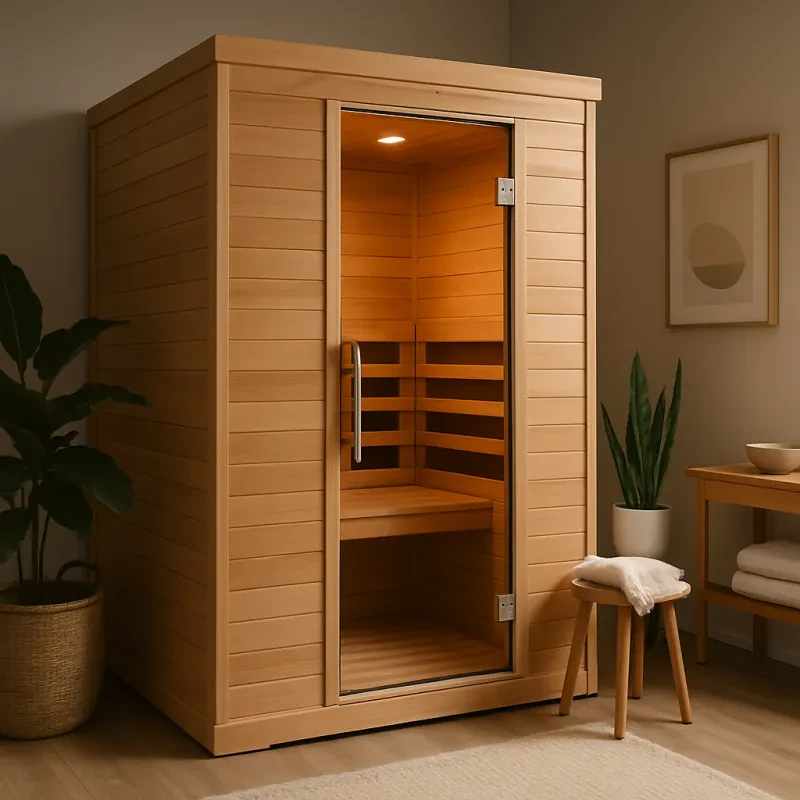Saunas have been cherished for centuries, not just for relaxation but also for their numerous health benefits. One of the most notable advantages of regular sauna use is improved cardiovascular health. When you sit in a sauna, your heart rate increases, and blood vessels dilate. This process can help improve circulation and lead to better overall heart health. By enhancing circulation, a sauna can be a potent ally in the battle against high blood pressure, making it a valuable addition to your wellness routine in the sauna vs steam room debate.
Another significant benefit of sauna use is its ability to promote detoxification. Sweating is one of the body's natural ways to eliminate toxins, and a sauna can help you sweat more profusely than traditional workouts. As you sit in the heat, your body releases toxins through your skin, which can lead to clearer skin and an overall feeling of refreshment. This detoxifying effect is often highlighted as a major advantage of saunas when comparing sauna vs steam room options.
Relaxation and stress relief are also top reasons why many people enjoy saunas. The heat can help to ease tension in your muscles and reduce both physical and mental stress. After a long day, taking time to unwind in a sauna can provide a soothing experience, helping you feel rejuvenated and revitalized. Whether you're dealing with daily stressors or sore muscles, a sauna could be your go-to solution in the sauna vs steam room discussion.
Lastly, saunas may support weight loss efforts. While sitting in a sauna isn’t a substitute for physical exercise, it can aid in weight management by increasing your heart rate and promoting calorie burn. The warm environment encourages your body to work a bit harder than it normally would at rest. Including sauna sessions as part of a broader fitness and wellness strategy can be beneficial in the ongoing sauna vs steam room conversation.
Advantages of a Steam Room
Steam rooms offer a host of advantages that make them a popular choice for relaxation and wellness. One of the primary benefits is the high humidity level, which can provide a soothing atmosphere for your body and mind. When you step into a steam room, the warm, moist air helps open up your pores, promoting sweating and aiding in detoxification. This process can also leave your skin feeling refreshed and rejuvenated, enhancing your overall complexion.
Another key advantage of using a steam room is its positive impact on respiratory health. The steam can help alleviate respiratory issues by loosening mucus and reducing congestion. This makes steam rooms particularly beneficial for individuals suffering from asthma, allergies, or those simply looking to improve their overall breathing. As you enjoy the steam, your airways open up, allowing for easier airflow and better oxygenation.
Additionally, steam rooms can aid in muscle recovery after workouts. The heat and humidity promote relaxation and increase blood circulation, which can help soothe sore muscles and alleviate tension. This makes steam rooms a great option for athletes or anyone looking to recover after physical activity. When comparing sauna vs steam room experiences, many find the moisture of the steam more comforting on tired muscles, allowing for a more effective recovery.
Lastly, steam rooms offer a unique opportunity for mindfulness and stress relief. The serene environment fosters relaxation, making it an ideal setting for meditation or simply unwinding after a long day. Many people find that spending time in steam rooms enhances their mood and overall sense of well-being. Therefore, when weighing the benefits of sauna vs steam room, the steam room emerges as a holistic choice for physical and mental rejuvenation.
Key Differences Between Both
When exploring the differences between sauna vs steam room, the first aspect to consider is the type of heat they provide. Saunas typically use dry heat, generated by heating rocks or a heater, which raises the temperature to around 150-195°F (65-90°C). On the other hand, steam rooms operate at lower temperatures, usually between 110-120°F (43-49°C), but maintain a high humidity level of 100%. This unique combination of heat and moisture in steam rooms creates an entirely different experience compared to the drier warmth of saunas.
Another key difference lies in the health benefits each offers. Saunas are known for promoting relaxation, improving circulation, and aiding in muscle recovery. The dry heat opens up blood vessels, which can help increase blood flow and reduce muscle soreness. Conversely, steam rooms are particularly effective for respiratory health, as the high humidity can help clear sinuses and improve breathing. The moist air can be soothing for individuals with asthma or allergies, making steam rooms a better option for those looking to alleviate respiratory issues.
Furthermore, the ambiance and experience in sauna vs steam room differ significantly. Saunas are often made of wood and feature a cozy, warm environment. Their unique scent, derived from the wood, adds to the relaxing experience. In contrast, steam rooms are tiled and typically feel more humid and misty, which can feel refreshing. The choice between the two ultimately depends on personal preference and the particular experience one seeks from their relaxation session.
Choosing What Is Best for You
Saunas typically use dry heat to create a warm environment, with temperatures ranging from 150°F to 195°F (65°C to 90°C). This dry heat can help relieve muscle tension and improve circulation. If you enjoy the feeling of warmth without the added humidity, a sauna might be the perfect fit for you. It’s also known for promoting detoxification through sweating, making it popular among those looking to enhance their overall wellness.
On the other hand, steam rooms operate at lower temperatures but have high humidity levels, usually around 100°F to 120°F (38°C to 49°C). The moist heat can be soothing for the respiratory system and is often beneficial for those with allergies or asthma. If you find that a sauna feels too dry or uncomfortable, trying a steam room could provide a more pleasant experience. It also offers skin benefits by hydrating and opening up pores, which many people find appealing.
Ultimately, choosing between a sauna vs steam room comes down to what you enjoy and what your body responds to best. Some may prefer the intense heat of a sauna, while others may find comfort in the humid atmosphere of a steam room. Whichever option you choose, both provide excellent opportunities for relaxation and wellness, helping you unwind and rejuvenate after a long day.


